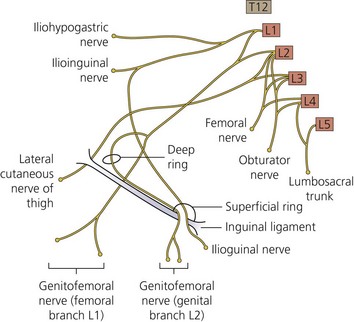CHAPTER 23 Lumbar and sacral plexus anatomy
Lumbar plexus
The lumbar plexus (Fig. 23.1) lies deep within the psoas major muscle in front of the transverse processes of the lumbar vertebrae. It is formed by the ventral rami of the first three lumbar nerves and the greater part of the ventral ramus of the fourth nerve. All the branches of the plexus emerge from the substance of the psoas major.
Stay updated, free articles. Join our Telegram channel

Full access? Get Clinical Tree









